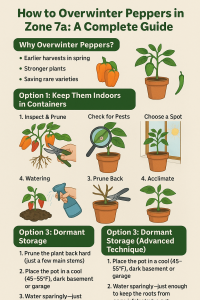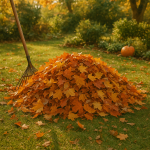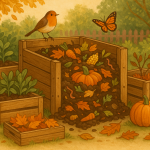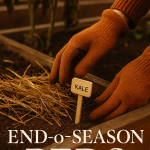Fall Bed Clean-Up: What to Pull, What to Leave
Preparing your garden for rest — the gentle way 🍂🌿
Autumn is nature’s pause button — a time to slow down, reflect, and prepare for renewal. As leaves tumble and blooms fade, gardeners everywhere face the same question: what should I clean up, and what should I leave behind? 
The answer depends on your goals: healthier soil, fewer pests, and more life in the spring. Here’s how to clean up your garden beds like a pro — without stripping away the magic of winter’s rest.
Why Fall Clean-Up Matters
A mindful fall cleanup sets the stage for a thriving garden next year. It helps prevent disease, balances soil health, and protects pollinators that overwinter in your yard. The key is knowing the difference between what’s messy and what’s meaningful.
- Reduce disease and pest carryover
- Protect soil from erosion and nutrient loss
- Provide safe winter shelter for beneficial insects
- Make spring prep faster and easier
What to Pull (and Compost)
Some plants have finished their work for the season — and it’s best to give them a graceful exit. Removing diseased or invasive growth keeps your beds healthy through the winter.
🪴 Pull These
- Vegetable plants past production (tomatoes, cucumbers, beans)
- Annual flowers that have died back
- Weeds and grasses before they go to seed
- Diseased foliage or mildew-prone leaves
🌾 Compost Them (Carefully)
- Healthy plant debris makes excellent compost
- Chop stems before adding for faster breakdown
- Avoid composting diseased material — dispose of it separately
What to Leave (Nature’s Winter Blanket)
Not everything needs to go! Leaving certain plants and debris in place protects wildlife, feeds the soil, and adds beauty to your winter landscape. Think of it as tucking your garden in under a cozy quilt.
- Perennials: Coneflowers, rudbeckia, and ornamental grasses provide winter texture and bird seed.
- Leaf litter: Leave a thin layer under shrubs and trees — it shelters pollinators and enriches soil.
- Root systems: Even dead annual roots prevent erosion and improve structure.
- Seed heads: Finches and chickadees will thank you!
Soil Care: Feed Before the Freeze
Before winter sets in, treat your soil to a nourishing meal. Fall is the perfect time to top-dress with compost, shredded leaves, or well-rotted manure. As these materials decompose over winter, they enrich the soil naturally — no digging required.
- Spread 1–2 inches of compost over all beds
- Mulch with straw or chopped leaves
- Avoid synthetic fertilizers before frost — they promote tender growth
Tools & Tasks to Wrap Up the Season
- Clean and oil garden tools to prevent rust
- Drain hoses and store them out of frost reach
- Label perennials or new plantings before they vanish under snow
- Take photos of your garden layout for next spring’s planning
A Note on Wildlife & Pollinators
Leaving a few untidy corners is a kindness to nature. Hollow stems house native bees, leaf piles shelter butterflies and frogs, and seed heads feed the birds. A “perfectly clean” garden may look neat — but it can feel empty to the creatures that make it alive.



